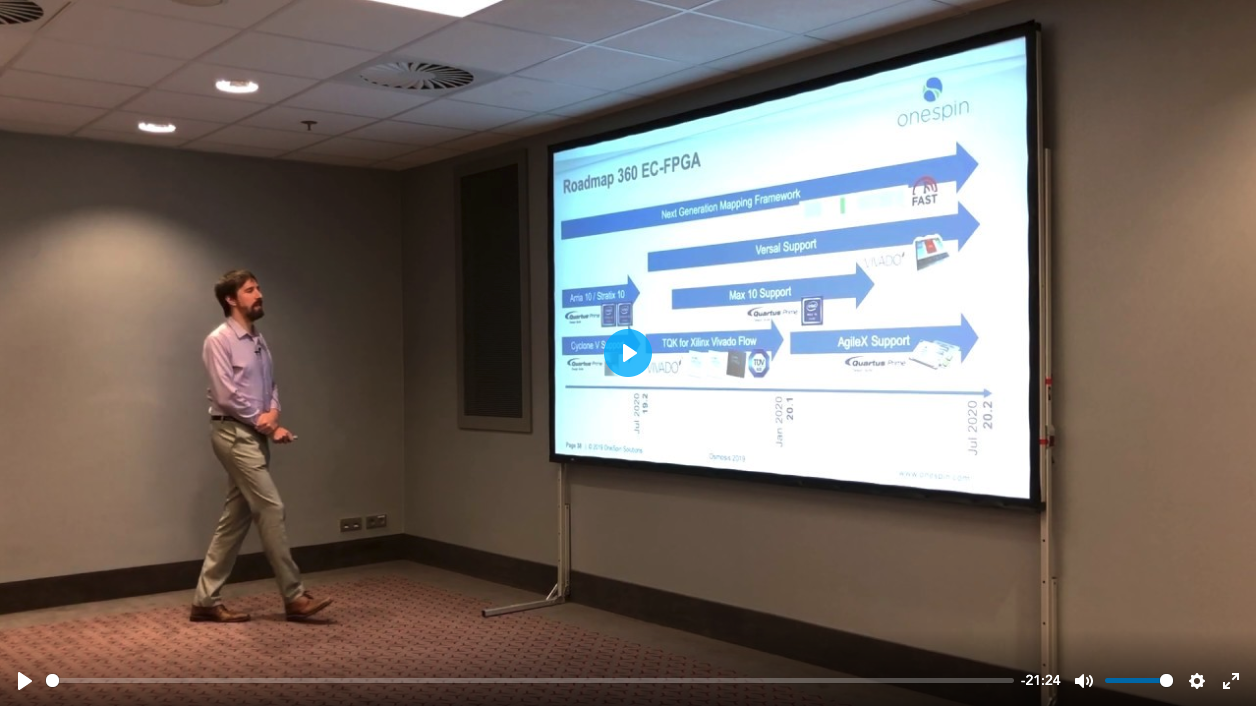Osmosis 2020: Customer Story - Formal Verification of Safety Mechanisms | Infineon Technologies
Keerthikumara Devarajegowda, PhD Candidate
This talk will highlight how formal verification is deployed to exhaustively verify designs that implement safety mechanisms such as Error Correction Codes (ECCs). ECC designs that encode a large data vector and detect multiple bit errors have been traditionally verified with simulation-based methods even though they are better suited for formal verification. The main reason was the scalability of formal verification for large ECC designs. Properties that are written to verify large ECC designs time-out without an outcome owing to limited memory or time resources. We discovered that a succinct characteristic of ECC designs can be exploited to achieve an exhaustive proof on large ECC designs. For instance, the proof runtime of a 3 bit error detection/correction property requires less than 2 hours for passing on a 256 bit ECC design. Previously, the same property timed out after running for 6 days. We successfully applied this approach to multiple instances of ECC designs implemented across several safety-critical automotive SoCs. Results show that the proof runtime of the properties leveraging the proposed approach decreases at least by a factor of 50, and scales proportionally with the width of the data vector and detection and correction capability of the codes.

